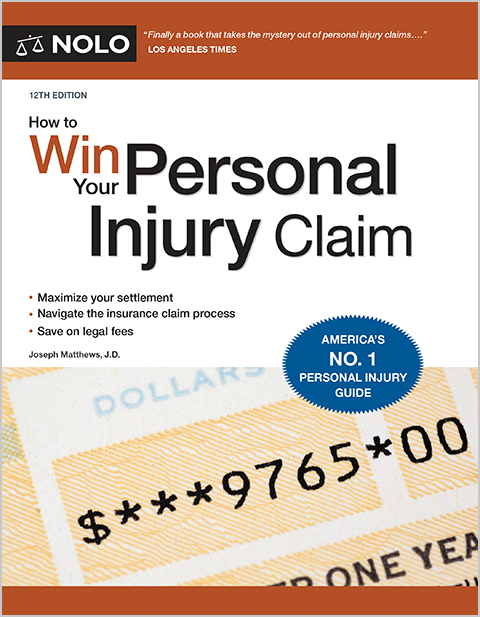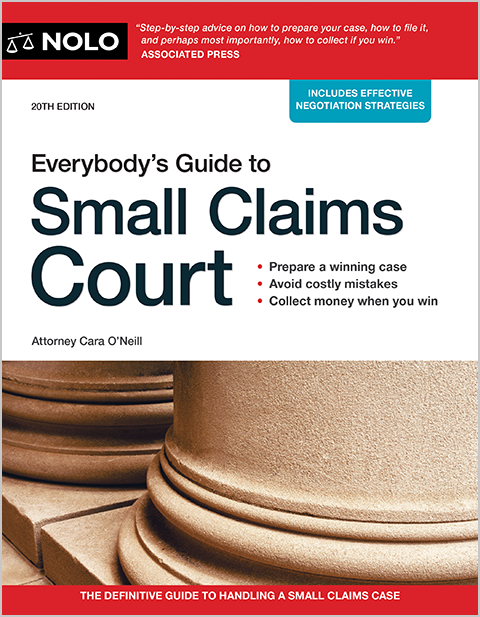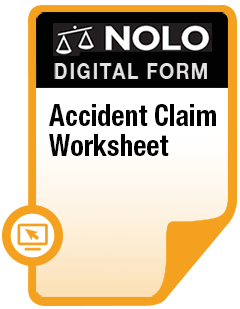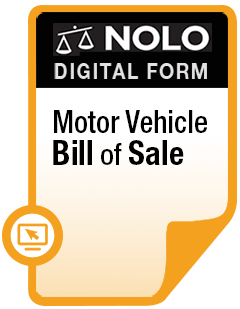Time limits for filing an Ohio car accident lawsuit, what happens when an injured driver shares blame for an accident in the state, and more.
After any kind of car accident in Ohio, several state laws could have a big impact on your options, including the two-year deadline for the filing of most car accident lawsuits in Ohio's courts, and the state's rules when more than one person is at fault for a crash.
- What Is Ohio's Car Accident Statute of Limitations?
- Does the Statute of Limitations Apply to Car Insurance Claims?
- What Happens If I Miss the Statute of Limitations Deadline?
- What If I'm Partly At Fault for My Ohio Car Accident?
- How Much Car Insurance Do I Need in Ohio?
- Can I Drive a "Salvage" Vehicle in Ohio?
- What's Next After an Ohio Car Accident?
What Is Ohio's Car Accident Statute of Limitations?
A "statute of limitations" is a state law that sets a time limit on the right to bring a lawsuit. These deadlines vary depending on the kind of harm you suffered and/or the kind of case you want to file.
Ohio's Car Accident Statute of Limitations for Injury Cases
In Ohio, the statute of limitations that will affect most car accident lawsuits is the same as the larger one that applies to most personal injury cases. Specifically, under Ohio Revised Code section 2305.10, an "action for bodily injury" (a personal injury lawsuit, in other words) must be filed within two years of the date of the injury. That includes an injury claim filed by a driver, passenger, motorcyclist, bicyclist, electric scooter rider, or pedestrian.
Ohio's Statute of Limitations for Vehicle Damage Lawsuits
The same two-year deadline applies for any lawsuit over damage done to a vehicle or other personal property through a car accident. Learn more about property damage lawsuits in Ohio.
Ohio Wrongful Death Lawsuits After a Car Accident
If someone died as a result of the accident, and the family or other representative of the deceased person wants to file a wrongful death lawsuit against the driver who caused the crash, the deadline for starting that case is two years from the date of the deceased person's death (keep in mind, that date might be different from the date of the accident).
Whether your case is a standard personal injury lawsuit or one that includes a wrongful death claim, it will most likely turn on your ability to prove that the at-fault driver's negligence was the cause of the car accident. Learn more about proving fault after a car accident.
Does the Statute of Limitations Apply to Car Insurance Claims?
No, the statute of limitations doesn't apply to a car insurance claim. Any insurance company, whether your own or the other driver's, is going to require you to make a claim—or at least give the insurer notice of an incident that could trigger a claim—"promptly" or "within a reasonable time" after the accident. That usually means a matter of days, or a few weeks at most. Get details on what to do after a car accident.
But this doesn't mean the statute of limitations shouldn't concern you during the insurance claim process. Even if you're pretty sure your claim will settle, it's always a good idea to leave yourself plenty of time to file a lawsuit if you need to. From a car accident settlement negotiation strategy standpoint, that will give you more leverage.
What Happens If I Miss the Statute of Limitations Deadline?
Having read all of this, you may be wondering what happens if the statute of limitations deadline has passed but you try to file your lawsuit anyway. In that situation, the person you're trying to sue will point out to the court that the deadline has passed, and the court will almost certainly dismiss the case (unless a rare exception applies to extend the deadline). That's why it's so important to understand how the statute of limitations applies to your situation, and make sure you follow it.
What If I'm Partly At Fault for My Ohio Car Accident?
"Comparative fault" refers to the situation where more than one party is at least partially at fault for an accident. States follow different approaches in this scenario.
In an Ohio personal injury lawsuit, you can recover against any party who was more at-fault than you were, but your damages (the amount of your financial recovery) will be reduced by a percentage that corresponds to your share of liability. In the language of the law, this means Ohio is a "modified comparative negligence" state.
Of course, this rule controls judge or jury awards in civil lawsuits (if you get to that stage). But before you get to that point, a car insurance claims adjuster will negotiate a settlement with an eye on Ohio's comparative fault rules. Keep in mind that because there's no precise way to distribute fault for the crash, the outcome will depend on your ability to negotiate with an insurance claim adjuster, or to convince a judge or jury.
What's an Example of How Ohio's "Modified Comparative Negligence" Rule Works?
Let's say you're driving a few miles-per-hour over the speed limit when another driver suddenly makes a left turn in front of you. Without enough time to stop, you collide with the other car. The other driver is found to be 80 percent at fault, but since you were speeding, the jury (or adjuster) figures that you were 20 percent at fault for the accident. If you would otherwise be entitled to a $10,000 award or settlement, it would be reduced to $8,000 based on your 20-percent share of fault.
One last note: You won't be able to recover anything at all in court under Ohio's modified comparative negligence rule if your share of fault for the accident exceeds 50 percent.
How Much Car Insurance Do I Need in Ohio?
Car insurance is certain to play a part in any claim that's made after a car accident. Ohio, like most states, requires the owner of a motor vehicle to maintain a certain amount of insurance coverage—or otherwise demonstrate financial responsibility in case an accident occurs—in order to operate the vehicle legally on the state's roads and highways. So, understanding the Ohio auto insurance rules is essential to any potential car accident case. For the details, check out our companion article on Ohio car insurance rules and requirements.
Can I Drive a "Salvage" Vehicle in Ohio?
No. If your vehicle is under a "Salvage" title in Ohio, it can't legally be driven on public roads or highways until you get a regular (non-"Salvage") certificate of title on the vehicle from the Ohio Bureau of Motor Vehicles.
Ohio law usually defines a "salvage" vehicle as one that has been damaged to such an extent that an insurance company has declared it to be a "total loss", and has paid out a claim on the vehicle's pre-damage value to the owner. After this, the insurance company (or the owner) has to get a "Salvage" certificate of title on the vehicle from the BMV within 30 days.
How to Get a "Rebuilt Salvage" Title in Ohio
To get a new certificate of title on a "salvage" vehicle in Ohio (so that it can be registered properly and get back on the road), the vehicle must be repaired or rebuilt, and must pass an inspection by the Ohio State Highway Patrol. Learn more about Titling a Salvage Vehicle in Ohio (from Ohio BMV).
What's Next After an Ohio Car Accident?
It's important to understand the different Ohio laws that might come into play if you're involved in a car accident. But at some point you might need more than just information. Especially if you've suffered significant injuries in a crash, it might make sense to discussion your situation—and your options—with an experienced legal professional. Learn more about how attorneys can help with a car accident claim and how car accident lawyers get paid.
Have you been in a car accident?
Take our free car accident quiz to find out if you're likely to get a settlement.
- What Is Ohio's Car Accident Statute of Limitations?
- Does the Statute of Limitations Apply to Car Insurance Claims?
- What Happens If I Miss the Statute of Limitations Deadline?
- What If I'm Partly At Fault for My Ohio Car Accident?
- How Much Car Insurance Do I Need in Ohio?
- Can I Drive a "Salvage" Vehicle in Ohio?
- What's Next After an Ohio Car Accident?



